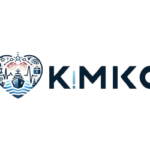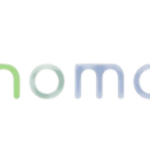News you
can watch.
Smart Material and beyond.
Most recent episodes
Application of Graph Neural Networks for the discovery of new materials for the cathode of batteries
Authors: Eduardo Abenza Severá
Abstract
The development of batteries with better properties is one of the most promising lines of work in Materials Science nowadays. Because the materials discovery process is slow and expensive, extensive efforts are being made in this line of research. One of these initiatives is LiOn-HD, the project in which this work has been developed. The goal of this project is to discover new materials with higher energy density, lower cost and more environmentally friendly. In LiOn-HD project, the role of HI-Iberia, the institution where this work has been developed, is to use Artificial Intelligence techniques for the discovery of novel materials for their use in the cathode of the batteries.
The cathode is usually the component that limits the batteries’ performance. Our strategy is to combine a generative model with a predictive model; while the first generates materials, the second one predicts some properties of interest of these new materials that are related to the performance of the material in the cathode. The materials can be represented in different ways for Deep Learning models to learn some property from them. The most promising approach for materials property prediction is to represent the material’s unit cell as a graph.
Graph Neural Networks are the most adequate Deep Learning models to learn from graphs. Several Graph Neural Networks models have emerged in the last years with an immense predictive power in the field of Materials Science. Two of them, namely Crystal Graph Convolutional Neural Networks and Materials Graph Network, have been evaluated in this work. Another goal of this work was to extract knowledge on why these models work so well. For this objective, XGNN method has been employed for the explanation of Crystal Graph Convolutional Neural Networks predictions in terms of the material’s graph structure.
KIMIKO: IA PLATFORM TO PREVENT CORROSION ON SHIPS
Authors: Eduardo Abenza Sévera, Cesar Alonso Garrido, Alvaro Caruana Santiago, Roberto Gomez-Espinosa
Abstract
Marine corrosion represents a significant challenge in the shipbuilding industry, affecting the durability and safety of vessels. This problem, which affects both the hull and internal piping of vessels, generates high maintenance costs and can compromise structural integrity. The Kimiko project, a collaboration between Navantia and HI Iberia, aims to develop an artificial intelligence platform to prevent corrosion in ships by designing more resistant materials and implementing predictive solutions.
The platform is structured on several machine learning models that predict environmental conditions along ship routes, simulate the corrosion process under dynamic conditions and at the atomic level, and generate new steel alloys and coatings that are more resistant to corrosion. In addition, the performance of these new materials is experimentally validated. Kimiko is expected not only to reduce maintenance costs and improve the operational safety of ships, but also to optimize the durability of components exposed to aggressive marine environments.
Smart Material AI: artificial intelligence platform for the discovery of novel materials
Authors: Eduardo Abenza Sévera, Cesar Alonso Garrido, Alvaro Caruana Santiago, Roberto Gomez-Espinosa
Abstract
Artificial intelligence (AI) has become an essential tool in the field of materials science, however material scientists often face friction when attempting to integrate AI into their research practices. This paper presents Smart Material (SM), an innovative platform designed to accelerate and optimize the discovery of new materials, leveraging deep learning techniques to facilitate more efficient and precise analysis. SM includes capabilities for querying and learning from large experimental and theoretical datasets, generating entirely novel material prototypes, and predicting the properties of these new materials before experimental synthesis and characterization.
Currently, SM is powering projects ranging from the naval industry, through the simulation of corrosion in vessel materials, to the energy industry, with the identification of more efficient materials for lithium-ion batteries. The results obtained so far with this platform have been promising, leading to the discovery of a promising lithium-ion battery cathode. This paper will discuss the platform’s methodology in detail and the findings achieved thus far, along with the potential of this technology to revolutionize the field of materials discovery.





